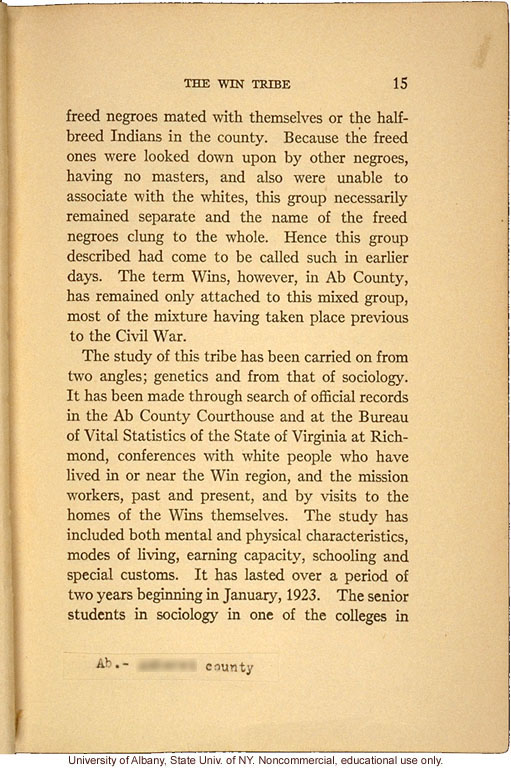The Win Tribe 15
freed negroes mated with themselves or the half-breed Indians in the county. Because the freed ones were looked down upon by other negroes, having no masters, and also were unable to associate with the whites, this group necessarily remained separate and the name of the freed negroes clung to the whole. Hence this group described had come to be called such in earlier days. The term Wins, however, in Ab County, has remained only attached to this mixed group, most of the mixture having taken place previous to the Civil War.
The study of this tribe has been carried on from two angles; genetics and from that of sociology. It has been made through search of official records in the Ab County Courthouse and at the Bureau of Vital Statistics of the State of Virginia at Richmond, conferences with white people who have lived in or near the Win region, and the mission workers, past and present, and by visits to the homes of the Wins themselves. The study has included both mental and physical characteristics, modes of living, earning capacity, schooling and special customs. It has lasted over a period of two years beginning in January, 1923. The senior students in sociology in one of the colleges in
Ab - [obscured] county
[end]


